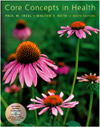Figure 11-1 (See p. 286 in your text.) Annual deaths among smokers attributable to smoking-related diseases An abstract of the analysis cited for this figure is available online http://jama.ama-assn.org/issues/v284n6/abs/joc00088.html
Thun, M. J., L. F. Apicella, and S. J. Henley. 2000. Smoking vs. other risk
factors as the cause of smoking-attributable deaths. Journal of the American
Medical Association 284(6): 706-712. Other information on the health risks of smoking is available from the following: http://www.lungusa.org American Lung
Association http://www.cancer.org/gasp American
Cancer Society: Tobacco http://www.cdc.gov/tobacco CDC Tobacco
Information and Prevention Source (TIPS) http://www.who.int/toh WHO Tobacco Free
Initiative Table 11-1 (See p. 292 in your text.) Who Smokes? Statistics on tobacco use are published periodically by the Centers for Disease
Control and Prevention and can be accessed through the http://www.cdc.gov/tobacco
CDC Tobacco Information and Prevention Source. Other groups also track tobacco use: The annual http://www.DrugAbuseStatistics.samhsa.gov
National Household Survey on Drug Abuse (NHSDA), available online from the Substance
Abuse and Mental Health Services Administration (SAMHSA), includes tobacco use
statistics by age, gender, ethnicity, level of education, geographic location,
and by brand of cigarette smoked. http://monitoringthefuture.org
Monitoring the Future focuses on drug, alcohol, and tobacco use among high school
students (8th, 10th, and 12th graders). http://www.cdc.gov/nccdphp/brfss
CDC Behavioral Risk Factor Surveillance System looks at health risk behaviors
among adults, including the use of alcohol and tobacco. http://www.cdc.gov/nccdphp/dash/yrbs/index.htm
CDC Youth Risk Behavior Surveillance System looks at a variety of health risk
behaviors among young people, including the use of tobacco. http://www.hsph.harvard.edu/cas
Harvard School of Public Health College Alcohol Study examines health risk behaviors
among college students, including tobacco use. Figure 11-4 (See p. 299 in your text.) Tobacco use among middle school and high school students Statistics on tobacco use are published periodically by the Centers for Disease
Control and Prevention and can be accessed through the http://www.cdc.gov/tobacco
CDC Tobacco Information and Prevention Source. Other groups also track tobacco use: The annual http://www.DrugAbuseStatistics.samhsa.gov
National Household Survey on Drug Abuse (NHSDA), available online from the Substance
Abuse and Mental Health Services Administration (SAMHSA), includes tobacco use
statistics by age, gender, ethnicity, level of education, geographic location,
and by brand of cigarette smoked. http://monitoringthefuture.org
Monitoring the Future focuses on drug, alcohol, and tobacco use among high school
students (8th, 10th, and 12th graders). http://www.cdc.gov/nccdphp/brfss
CDC Behavioral Risk Factor Surveillance System looks at health risk behaviors
among adults, including the use of alcohol and tobacco. http://www.cdc.gov/nccdphp/dash/yrbs/index.htm
CDC Youth Risk Behavior Surveillance System looks at a variety of health risk
behaviors among young people, including the use of tobacco. http://www.hsph.harvard.edu/cas
Harvard School of Public Health College Alcohol Study examines health risk behaviors
among college students, including tobacco use. | 


 2002 McGraw-Hill Higher Education
2002 McGraw-Hill Higher Education